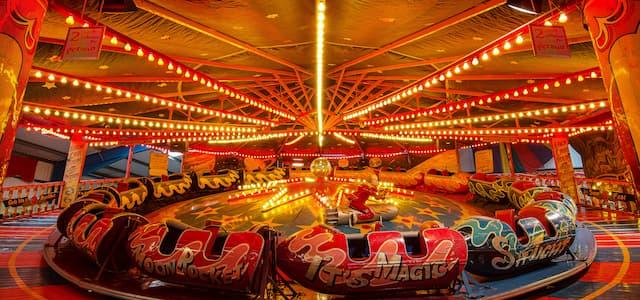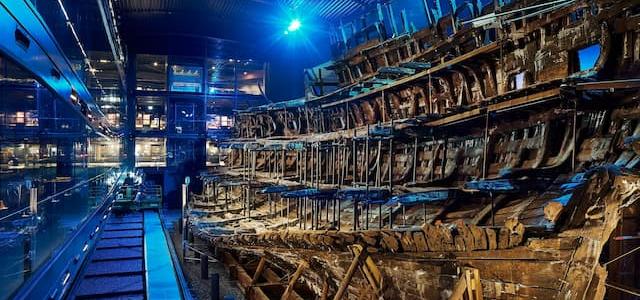
Loyd Grossman on the NHMF
‘The Living Heritage Memorial’ by Loyd Grossman

I recently attended an event at the British Museum to celebrate 25 years of a unique Fund – The National Heritage Memorial Fund (NHMF) - and was struck by just how much of our iconic heritage it has helped to save over its 25 year history. This heritage includes much-loved favourites such as Henry V111’s beloved ship the Mary Rose, the Flying Scotsman, and rare masterpieces by the likes of Picasso, Turner and Reynolds.
I bet many people who regularly enjoy museums and galleries of all shapes and sizes around the UK don’t realise just how many items on show may have been at serious risk or under threat of going abroad at some point or another. But this is often the case. In my role as Chair of National Museums Liverpool, the NHMF has been able to help us with our own collections and it’s vital for all museums that there is a fund to which we can turn when emergencies occur.
The Fund has saved over 1200 items – that’s a whopping £220m’s worth of glorious and irreplaceable heritage for us to enjoy. It’s a Government Fund currently giving out £5m each year but soon to be doubled to £10m. The benefits of this funding are felt by millions of people who enjoy our nation’s rich heritage – after all, more people visit museums in UK than go to football matches! Our museums, art galleries and stately homes are famous the world over and we should all be really proud of them.
NHMF was originally set up as a way to protect what we had fought for in two world wars and as a result the things and places it saves are a ‘living’ war memorial. They include for example precious landscapes such as the Brecon Beacons and the Orford Ness nature reserve in Suffolk – both stunning and important places that we would hate to lose. The ‘memorial’ in the title shows that this money is given to remember those who gave their lives for this country – more important than ever this year, as the country celebrates 60 years since the end of World War II.
All this makes the NHMF the most original and extensive ‘war memorial’ in the world. And it got me thinking about the types of things in the future that might be in need of a heritage champion to come in and help save them for the nation as a symbol of the sacrifice made by our soldiers, sailors and airmen.
So what heritage would you choose to commemorate those who gave their lives? Would it be heritage with obvious wartime links, such as the last surviving World War II destroyer, HMS Cavalier, which now proudly stands as a striking memorial to the 30,000 men who lost their lives in destroyers? Or perhaps The Waterloo Dispatch, one of the most evocative documents from the most dazzling period in our military history?
Or how about the beautiful avenue of English elms at Wimpole Hall that, straight as an arrow and over 2 miles long, guided RAF bomber pilots safely home during the World War 11. The trees fell prey to Dutch elm disease and died but the NHMF stepped in to help the National Trust restore the avenue to its former glory. It is so moving to think that these trees actually saved lives. Restoring them and telling their story helps our children and their children to remember a pivotal point in our history.
Looking further into the future, would it be iconic buildings such as the BT Tower, the London Eye, the bridge over the Tyne or Anfield Stadium? With our recent cricket success and long history of cricket, perhaps it would be Freddie’s bat or the Pavilion at the Oval?
Great heritage encompasses all these things – it’s really anything that gives us our sense of identity and place and the NHMF can help save the very best examples.
John Peel’s amazing record collection might be considered just that – a modern archive that tells the story of the music industry. And what about Elton John’s highly imaginative wardrobe or dear Ronnie Barker’s jokes? These things help make us the nation we are and, should they be at serious risk in the future, it’s comforting to know there is a Fund that could help.
We were all saddened recently by the fire that destroyed the Wallace and Gromit archive characters. Perhaps this is no less our heritage than a Roman goblet or work of Renaissance art. If we ‘are what we eat’, maybe even one of my sauces could even make it onto the list one day!
More seriously, as Remembrance time comes again and funding for the NHMF increases, it is time to ask how we should best remember our war heroes – both those who are no longer with us and those modern heroes still fighting for all that we hold dear. What sort of heritage might we want to protect in the future in order to honour them?
Whilst a statue or monument might proudly mark a moment, I prefer the thought of a blend of ‘living’ heritage - one we can all enjoy and speaks to all of us on many different levels. Also I’d like one that contributes to the vital work of museums, galleries and historic places in this country, helping to keep them dynamic, exiting and inspirational for the 21st Century public.
Loyd Grossman
Note to editors
An exhibit displaying some of these ‘National Treasures’ runs until the 28th Nov 05 at the British Museum, London. It gives a glimpse of the range of our heritage the NHMF has supported. A Silver Jubilee exhibition of works of art bought with the help of NHMF is currently on show at the National Gallery in Room I.

